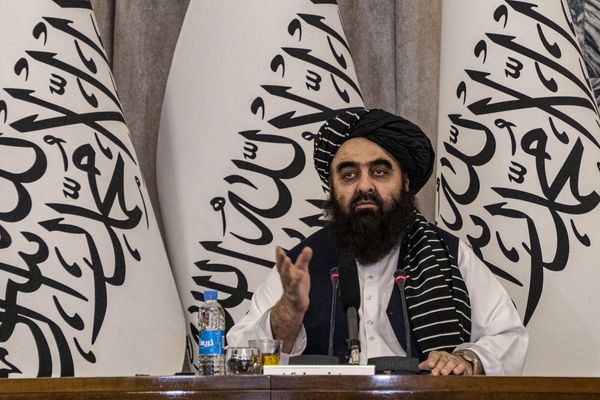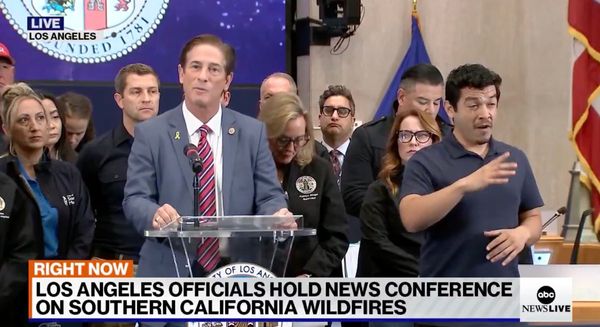
Happy New Year! It's been another week, and analysts are mixed on Tesla's future following lower-than-expected sales figures. Truist's daredevil analyst has another review of Tesla's Full Self-Driving (FSD), and a setback affecting Rivian has been fixed.

Tesla's Q4 deliveries shortfall has analysts mixed.
If it was anyone's year in 2024, it would most certainly be Elon Musk's. However, his companies are hitting a bit of a rough patch just days into the new year.
On Jan. 2, Musk's electric automaker, Tesla (TSLA) , reported that in Q4 2024, it delivered 495,570 EVs, an increase from the same period in the year prior but falling short of many analysts' estimates.
These results have led Tesla bears and bulls to stay true to their positions. In a note published on Jan. 2, Wedbush's Dan Ives reaffirmed the firm's "outperform" rating and $535 price target on TSLA stock, joining Canaccord Genuity, which raised its price target from $298 to $404.
At the same time, Ryan Brinkman of JP Morgan reiterated his "underweight" rating and $135 price target, noting that the conditions under Trump's re-entry to the White House could cause Tesla to lose as much as 40% of its profits. Tesla’s lower Q4 2024 deliveries already raised concerns about the company’s 2024 earnings.
According to JPMorgan, the axing of key government subsidies like the Consumer Tax Credit (CTC), as well as about $2 billion that come sales of California Air Resources Board (CARB) ZEV credits, will significantly impact Tesla’s bottom line by up to $3.2 billion combined; about 40% of a projected $8.3 billion in 2024 EBIT for the company.
"Tesla appears to have the most to lose from the shifting regulatory backdrop,” Brinkman wrote.
💰💸 Don’t miss the move: SIGN UP for TheStreet’s FREE Daily newsletter 💰💸
But on the flip side, Ives and Wedbush wrote that while it missed its delivery estimates, the 495,570 vehicles Tesla delivered in the quarter was a "respectable" number, noting that "strong buyers" will help pick up any decline in Tesla shares.
Like in prior notes in months prior, he reiterates that much of the value locked into Tesla shares is from Musk & Co.'s piece determination in AI and robotaxis. Ives believes that TSLA share prices will rise once Trump begins his second term, as Tesla will benefit from the potential deregulation of autonomy.
"The next step in this broader Tesla strategic vision begins is the autonomous and AI era which will be accelerated under a Trump White House....we believe Tesla remains the most undervalued AI play in the market today," Ives wrote. "The laser focus for Tesla is the 2025 reaccelerated delivery growth story and FSD penetration with autonomous the grand vision for Musk & Co. Any sell off today on weaker 4Q delivery numbers we are strong buyers."

Tesla's newest FSD update still has 'imperfections,' says Truist analyst.
Last year, Tesla CEO Elon Musk encouraged shareholders to take him at his word about the automaker's illusive Full Self-Driving (FSD) software.
"I would encourage anyone to understand the system better to simply try [Full-Self Driving] out, let the car drive you around," Musk dared investors and analysts in an earnings call. "Once people use it, they tend to continue using it. So it’s vastly compelling."
If there is any daredevil out there that would dare try, it would be Truist Securities Analyst William Stein, who has documented his FSD experience multiple times.
In a note published on July 29, the analyst wrote that while trying a special "Demo" mode of FSD, the Model Y he and his teenage son rode in made a number of illegal and dangerous moves that "would have surely caused an accident."
In a subsequent note on August 13, he wrote that he tried out version 12.5 of FSD, which exhibited more human-like driving behavior but still called it a 'fast fail' because it committed many egregious driving infractions.
"My 16-year-old son came away terrified," Stein wrote. "I wasn't so sure. FSD did not cause an accident or necessarily require an intervention. I could envision TSLA describing these moves as more human-like and less robotic than earlier systems, and therefore better suited to real-world driving conditions."
“It seems especially true if FSD were trained by NYC taxi drivers."
More Business of EVs:
- Porsche walks back EVs - people still want gas cars
- Donald Trump’s EV stance fuels sales rush for dealers
- Volkswagen's massive issue is a privacy nightmare for EV owners
In a new note published on Jan. 1, Truist Analyst William Stein wrote that his test of FSD "went better than ever and required no interventions" but found a significant hole related to the system's dependence on car-mounted cameras.
He wrote that in his test, which took place on Dec. 31, 2024 from a Tesla showroom and service center in White Plains, N.Y. to a Starbucks in nearby Bronxville, the vehicle exhibited "mostly smooth and human-like" driving."
"The most important thing to recognize about this test is that our 15-mile round-trip required zero interventions. There were no near-accidents, and I touched neither the pedals nor the steering wheel at any time," he wrote. "FSD created a path plan that included highway entrances and exits (including some challenging ones), and a traffic circle. FSD navigated around a double-parked car, and changed lanes on the highway logically."
He continued his analysis with observations that noted FSD exhibited the likings of a more "aggressive driver," failing to yield to a pedestrian in a crosswalk and following other cars at speeds nearing 70 miles per hour "rather closely," which made Stein very nervous.
Unlike other autonomous or self-driving systems developed by Cruise or Waymo, which uses a combination of LiDAR, radar and cameras to capture the world around it, Tesla relies on just cameras to sense its surroundings. Stein shared that there are pitfalls here.
"If FSD's failures were a matter of sensing abilities, this is more problematic because of TSLA's unusual reliance on camera-only sensors. In our prior evaluations, when FSD lingered at the very edge of a lane, near barrier walls and other drivers, it seemed like an error and was so jolting that we intervened," he said.
"With a camera-only system and no vertically elevated sensor, FSD appears to be perceptually challenged. This single 15-mile loop without an intervention was impressive and suggests TSLA may eventually “solve” autonomy. It's just not ready for prime time (let alone a robotaxi service) yet."

RJ Sangosti/MediaNews Group/The Denver Post via Getty Images/Getty Images
Rivian sales slow on component shortage
On Nov. 7, 2024, Rivian (RIVN) reported Q3 2024 earnings that missed analyst expectations reporting net losses of $1.1 billion and lower revenue of $874 million, a 35% drop from the $1.3 billion it reported in the same period the prior year.
It placed much of the blame for slowed sales on a key component shortage that slowed production of its recently overhauled flagship R1S and R1T vehicles, as well as the Rivian Commercial Vans used by Amazon Prime delivery drivers — specifically, copper windings used in its in-house Enduro motor.
The company pinpointed that the issue was due to a miscommunication with a key supplier, Essex Furukawa. The problem became so serious that it lowered its annual production guidance from 57,000 vehicles to 47,000 to 49,000.
Given that Rivian's new Enduro motor was designed to build more cars at a cheaper cost, Rivian founder and CEO RJ Scaringe noted that the issue has limited the company's ability to produce cars.
“This has been a tough quarter for us because of some of those supply chain or supply ramp challenges, and one of those suppliers in particular has limited our production quite substantially,” Scaringe said.
However, in a recent statement on Jan. 3, Rivian explained that the supply issue has ben resolved, noting that the shared component that affected production of its R1 and RCV platforms is no longer limiting its production.
Despite the challenges, Rivian reported producing 49,476 vehicles in 2024, well above the upper end of its revised forecast.
Rivian is set to announce its Q4 2024 earnings results after market close on Feb. 20.
Related: Veteran fund manager issues dire S&P 500 warning for 2025







